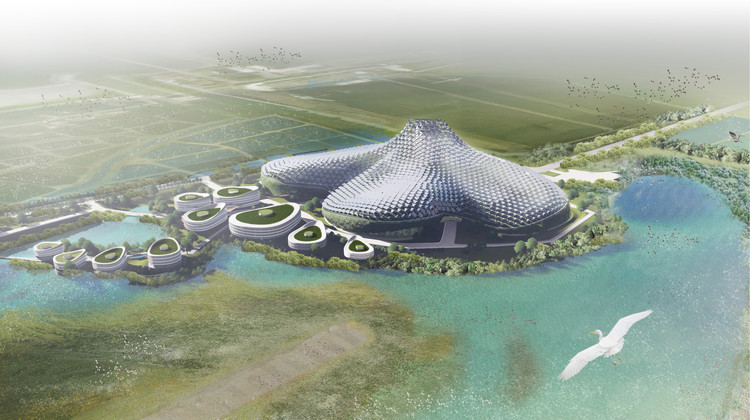
The island nation of Taiwan is a country that boasts both a high population density and a wide range of ecosystems. However, a large issue that the country is currently facing involves the energy production and consumption, and the negative impact it has on the environment. With the largest power plant slated to be shut down by 2023, a team from Taiwan has devised an architectural proposal for how to construct a plant that both generates enough electricity to serve the metropolitan area and reduce its negative impact on the air quality and surrounding wetlands.

The team’s vision was centered on three main principles that respected both the wildlife and context of the site. First, they ensured that the site would still be used to benefit the local communities. Second, the team respected the ecological integrity of the site, meaning that they understood the ecosystems and micro-ecosystems of the area. Lastly, they aimed to abide by energy conservation principles, which would result in no energy loss or waste.

The master plan of the design is located on the least environmentally part of the site and is masked by various plants so that migrating birds will be able to find their way into the wetland habitats. At the roof level of the plant, solar panels are positioned on top of a double skin green façade that will connect to the chimneys. Airflow between the layers of the façade will help reduce the building’s temperature and provide a natural ventilation solution.

On the ground level, the wetlands, ponds, and mangroves will be restored and the local communities will be connected to the site through various activities including sports, swimming, and bird watching. The design will blend in with the topography of the site and will serve as a welcome site for visitors to enjoy the natural environment while also learning about the process of power generation.
News via: MEPM lab

















